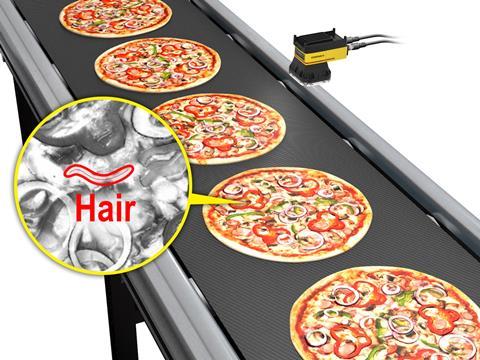
At a time where manufacturers are demanding more from their machine systems – could deep learning be the solution? This is the question asked by Cognex in our latest Innovation Spotlight.
Manufacturers in the packaging industry are increasingly demanding faster, more powerful machine vision systems. They are expected to make a great number of products at a higher quality threshold and for less cost.
Packaging like bottles, cans, cases, and boxes can’t always be accurately inspected by traditional machine vision. For applications that present variable, unpredictable defects on confusing surfaces such as those that are highly patterned or suffer from specular glare, manufacturers have typically relied on the flexibility and judgment-based decision-making of human inspectors.
However, new deep learning-enabled vision systems differ from traditional machine vision because they are essentially self-learning and trained on labeled sample images without explicit programming.
Deep learning-based software uses human-like intelligence to appreciate nuances like deviation and variation, and outperform even the best quality inspectors at making reliably correct judgments. Most importantly, however, is that it is able to solve more complex, previously un-programmable automation challenges.
Using an array of tools, Cognex Deep Learning can locate and count complex objects or features, detect anomalies, and classify said objects or even entire scenes. And last but not least, it can recognize and verify alphanumeric characters using a pre-trained font library.
Let’s explore how Cognex Deep Learning does all of the above for packagers and manufacturers.
Packaging Defect Detection
Labeling defects are well-handled by traditional machine vision. High-contrast imaging and surface extraction technology can capture defects, even when they occur on curved surfaces and under poor lighting conditions.
Yet the metal surface of a typical aluminum can might confuse traditional machine vision with its glare as well as the unpredictable, variable nature of its defects, not all of which need to be rejected.
Using a novel deep learning-based approach, it’s possible to precisely and repetitively inspect all sorts of challenging metal packaging surfaces. With Cognex Deep Learning, rather than explicitly program an inspection, the deep learning algorithm trains itself on a set of known “good” samples to create its reference models.
Cognex Deep Learning can identify and report all defective areas on the can’s surface which deviate outside the range of a normal acceptable appearance.

Packaging Optical Character Recognition
Cognex's deep learning OCR tool is able to detect and read the plain text in date/lot codes, verifying that their chains of numbers and letters are correct even when they are badly deformed, skewed, or—in the case of metal surfaces—poorly etched. The tool minimizes training because it leverages a pre-trained font library.
Training is limited to specific application requirements to recognize surface details or retrain on missed characters. All of these advantages help ease and speed implementation and contribute to successful OCR and OCV application results without the involvement of a vision expert.
Packaging Assembly Verification
A deep learning-based system is ideal to locate and verify that individual items are present and correct, arranged in the proper configuration, and match their external packaging. It generalizes each item’s distinguishable characteristics based on size, shape, colour, and surface features.
The Cognex Deep Learning software can be trained quickly to build an entire database of items. Then, the inspection can proceed by region, whether by quadrant or line-by-line, to verify that the package has been assembled correctly.
Packaging Classification
Categorization is important yet remains out of reach for traditional machine vision. Luckily, Cognex's deep learning classification tool can easily be combined with traditional location and counting machine vision tools, or with deep learning-based location and counting tools if the kitting inspection deals with variable product types and requires artificial intelligence to distinguish the generalizing features of these types.
This content was sponsored by Cognex.












